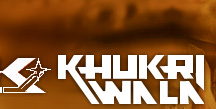|
|
|
 |
Basic Medieval Sword-Fencing Terminology
|
 |
Basic Medieval
Sword-Fencing Terminology Abschneiden - "cutting aside" also
known as Schnitt ("slices") and Rakes in English. They are used at
closer distance against the opponents forearms and hands.
Absetzen - "setting aside", word was used to
signify a type of t move where the sword is hooked over the opponent's and
forced downwards to trap. It mau simply mean parry with a thrust.
Abwenden - to "ward off", or deflect a
Am Schwert - "on the sword", attacks made while
maintaining constant pressure on the opposing blade, also known as the
Winden that means winding or turning.
Anbinden - The engaged position with weapons crossed
Back guard/ stance - weapon pointing down and diagonally
backward, also called Mittelhut by Medieval German masters, and a Tail guard
by the Italians.
Binden - "a bind" or trapping action by
pressing blade upon blade or edge on edge.
Blossfechten - unarmored combat in the Fechtschulen
Cuts - The German schools recognized three major forms of
cut: Oberhau (over cuts) - downward diagonal or vertical, Unterhau (under
cuts) upward or rising, and Zwerchhau or Mittelhau (cross cuts) horizontal
right-to-left and horizontal left-to-right. Further there were specific
names for the cuts for forearms, neck, leg etc.
Cuts recogonized in early renaissance systems : vertical down (Fendente),
vertical up (Montante), horizontal (Tonda), plus diagonal descending
(Squalembrato) and diagonal rising (Ridoppio) which could be made from the
left (Roversi) or from the right (Mandritti)
Close guard/stance - Called Boar's Tooth guard in the
Italian styles, it is a position similar with the knees lowered and the
weapon pulled in low closer to the hip to deflect the attacks.
Drey Wunder - the "three wonders" as taught in
the German schools of swordsmanship. The three actions involved are the
thrust, the cut, and Schnitt
Durchwechseln - "changing through" the move of
evading contact with the opponent's blade while striking or simply changing
the line of attack.
Durchführen - "disengage under" in
close-combat leading your point under their sword to thrust at the opening
on the other side.
En Garde - ("on guard") French term first used
in 1400's to refer to simply a ready posture of both attack and defense with
any sword or weapon.
English great-sword fighting - Double Rowndes (a "molinello"),
Rakes (draw cuts), Haukse and Halfe Haukes (strikes from the high guard) are
the terms form English fencing texts.
Fechtbuch - "fight book" or "fencing book"
a German manual on fighting techniques and methods, particularly
swordsmanship
Fechtmeister - ("Fight Master") a German Master
of Defence or martial arts expert (Italian Meastro de' Arme' or Master of
Arms)
Fechtschule - A German Medieval or Renaissance fencing
school and competition
Federfechter - A German Renaissance fighting guild which
favored the rapier among other weapons
Filo - Italian for the edge of a blade
Flech - German for the flat blade
Fuehlen - Gauging the opponent's mind.
The Four Openings - four areas to aim on - 1. Opponents
right side, 2. Left side, above the belt, 3. Right below the belt, 4. Left
below the belt.
Foyne - 14th century term for thrusting.
Gaukler - meaning "juggler" or "acrobat",
for those teaching impressive but ineffective fencing.
Gioco stretto - "Close Playing", Italian for
entering techniques, in the later English systems of cut-and-thrust sword
these were known as "gryps". The actions involved grabbing the
opponents arm, striking with a pommel etc. The german close-in techniques
involve grappling and disarming techniques.
Gleich Fechten - attacking at the same time as the
opponent or In des Fechten
Guards/Wards/Stances - Huten or fighting positions and
postures. There are 14effective fighting postures. The five major ones are
High, Middle, Low, Hanging, and Back positions.
Halb Schwert - "half-sword" techniques of
gripping the middle of the blade with the second hand, gloved, armored or
bare. This allows a range of striking and deflecting actions. They are
called Mezza Spada ("middle sword") or even "false-point"
blows in Italian.
Handarbeit - handwork, it is that phase of the combat
where the distance between the opponents has closed in.
Hanging guard/stance - "Hengen" (left or right)
are important long-sword postures, they are called the Ochs ("ox")
stance in the German.
Harnischfechten - Combat in plate armor or "harness
fighting" in the Fechtschulen, called Spada in arme' in Italian
Hart und Weich - hard and soft, the idea is that when the
blades contact, gauge the opponents mind and oppose strength with weakness
and weakness with strength to control and exploit.
High guard/stance - called a Falcon guard (Posta de
falcone) by the Italians and Haukse Bill (as if "striking down like a
bird or prey") by the English as a Haukse Bill (as if "striking
down like a bird or prey") and Vom Dach or Von Tag ("from the roof")
by the Germans
In Des Fechten - overcoming the opponent attack by
counter attacking in the middle of his attack. The other two counter attacks
being Gleich Fechten and Nachreissen
Inside guard/stance - used for warding, thrusting and
parrying, it is called Finestra ("Window guard") in Italian,
Hangentorte ("hanging point") in German. It is a position where
blade pointing horizontally forward and the hilt is pulled in close.
Kampfplatz" - "Kampfring", an enclosed
area where judicial duels took place. It was an open patch made up of square
wooden barriers. Klopffechter - "clown-fighters", wandering,
swordsmen and performers during the 15th and 16th century, not considered a
true Fechtmeister
Kron - "crown", German for the Middle guard,
called Corona in Italian. It was also a type of half-sword parry against a
vertical downwards.
Kunst des Fechtens - the German art of fighting with
long-sword, messer or wrestling. The unarmored combat was called
Blossfechten, combat in plate armor was called Harnischfechten (or "harness
fighting").
Kurze Schneide - back of the single edged sword.
Lange Schneide - the sharpened edge of the sword or the
front of the sword.
Leger - German for position or stance, with reference to
the fighting posture.
Leichmeister - "dance-master" a derogatory term
used instructors teachin flashy but ineffective fencing techniques.
Long guard/stance - defensive thrusting position with the
blade horizontal and arms extended straight forward, ideal for warding and
making stabbing attacks or stop-thrusts Low guard/stance - called Alber, the
"Fool's guard" In the Germans since it was thought foolish to rely
only on defense, comanly known as the boar's tooth guard.
Luxbrueder (Company of St. Luke) - A Medieval German
fighting guild, similar to later English schools of defence, they were
headed by four adepts and a captain. Marxbrüder - Brotherhood of St.
Mark, a successful group of masters who at one time organized and regulated
the teaching and licensing of the fighting arts and the from Frankfurt
during Renaissance
Middle guard/stance - It was the foundation of other
stances and is called corona in Italian and pflug or plough in German. Here
the blade is held centered out from the lower abdomen at a 45-degree angle
aimed at the opponent's chest, throat or face
Meisterhau - "master cuts", prized techniques
in which the swordsman strikes in a manner so that his sword deflects the
incoming blow while simultaneously hitting the opponent.
Mittelhau - a horizontal left-to-right cross-cut.
Mordschlag - (or Morteschlag, "death blow") It
is a rare blow made by holding the sword blade itself with both hands and
striking with the pommel or guard, used to slam a foe in heavy armor
Nach - It is a technique of defensive countering,
opposite of Vor.. Nach und Vor are two important concepts in the
Fechtschulen.
Nachreissen - "traveling after", it is a method
of overcoming the attack by attacking immediately after the adversary's own
attack.
Obere Ansetzen - techniques delivered over or above the
opponent's guard
Oberhau - "over cuts" or strikes above the
waist that could be either diagonal or vertical
Ort - German for the tip of the sword
Pressing-the-hands - a move where the blade is pushed
against the opponent's forearms or hands just as they lift or lower to
strike.
Ringen Am Schwert - "wrestling at the sword",
sometimes called Ringkunst, also involving Schwertnemen ("sword-taking")
close in disarming moves and grappling (ground-fighting or Unterhalten, "holding
down")
Rossfechten - Mounted combat
Rota - It is a countering technique where the back edge
is raised to deflect the opponents blade and use a descending cut
immediately with the forward edge.
Rownde /Double Rownde - It refers to change in line of
attack by first bringing the weapon down, back and then high for rownde and
twice for double rownde.
Schielhau - a sideways cut with the back or short edge of
the blade, delivered with only one eye on your opponent .
Scheitelhau -a vertical cut, delivered either above or
below the waist.
Schwech - weak, it is the weaker part of the long sword
as per the German masters. It extends from the middle to the tip. It is also
known as Schwech (or Schwäche )
Schwertnemen - "Sword taking" close-in
disarming or trapping actions, called Gioco Stretto (Close Playing) in
Italian, they are used in long sword fighting.
Short guard/stance - it is a close range posture with low
hilt and vertical bladeand knees bent.
The "Spring" - (Das gayszlen) it is increasing
the rang eof the blade by cluching the pommel with the other hand.
Stark - It is the stronger part of the long sword. It
extends from the middle to the hilt.
Stuck und Bruch - ("technique and counter"), it
is the basic proposition that every technique or stance has a counter and
every counter has a technique.
Throwing-the-point - Converting a false cutting blow into
a sudden straight thrust.
Ueberlauffen - (overrunning), another counter attack,
implemented just when the opponent is attackingand striking their closer
targets exposed by their attacking stance.
Untere Ansetzen - techniques delivered under or below the
opponent's guard.
Unterhalten - "holding down", ground-fighting
techniques wresting or grappling moves
Unterhau - (under cuts) upward or rising strikes below
the waist, either diagonal (Zornhau) or vertical (Scheitelhau)
Versatzung - splacement or to displace, it is a defensive
action to put off an attack by a deflecting blow or counter strike
Von Fechten - attacking before, one of the three ways of
overcoming an opponent's attack
Vor - the offensive principle of fighting, aggressively
taking the initiative.
Vorfechter - an advanced student in the Fechtschulen
Waage - ("balance") standard fighting position
with legs and arms slightly bent.
"Was sehrt, das lehrt" - ("What hurts,
teaches") the basic concept that the real knowledge is gained by the
realistic instructions.
Winden - the "Winding", close binding actions
to maintain pressure and dominate the opposing blade.
Zornhau - a diagonal cut, delivered either above or below
the waist.
Zornhut - ("guard of wrath" or "rage guard")
it is a rather vulneraple stance where the sword is point down behind the
back but allows very powerful blows when effectively used.
Zwerchhau - "slanting cut" a horizontal
right-to-left cross cut also called Geschrenckt Ort
Zuefechten - one of the two phases of combat where the
combatants are closing together and their weapons make contact (prior to
Anbinden or Handarbeit)











